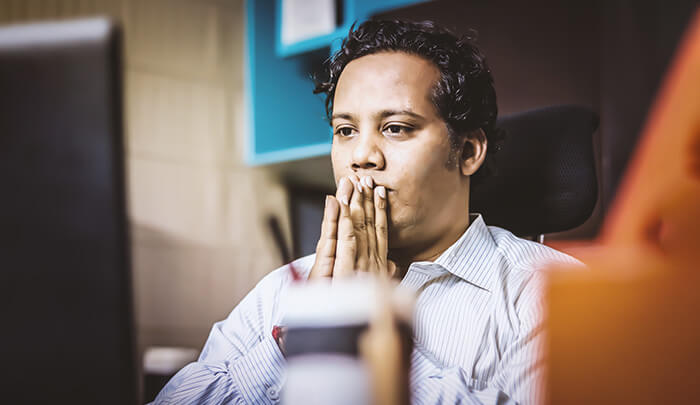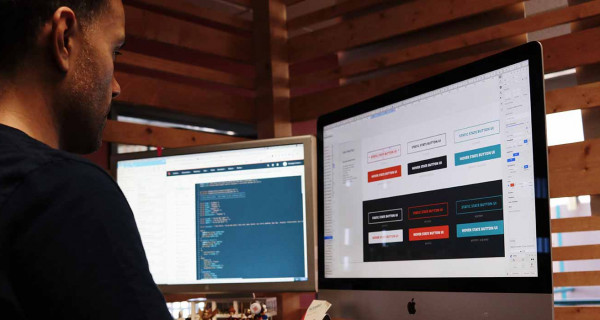Do you have a WordPress website and want to ensure it's optimised to drive traffic, perhaps load fast or just give users the best experience? WordPress is one of the most popular content management systems (CMS) used across the globe today. It's most commonly used to develop websites and blogs, although it is known to be super user-friendly, it can be challenging to determine just where to start when it comes down to optimising your WordPress website. Keeping your WordPress site SEO-friendly can make a significant difference in terms of your search engine visibility and ranking.
In this blog post, we will guide you through the process of making all the necessary tweaks to get the most out of your website; so that you can discover how simple it can be for your WordPress website to work for you. From developing an SEO-friendly page structure and optimised content to updating the various plugins and adding extra security features. If you want your WordPress site to perform at its very best, then it's essential you optimise it. Keep on reading, because these tips will help you improve your WordPress website like never before!
1. Selecting Your Theme
Picking the right WordPress theme for your website can be one of the most important steps when creating an optimised WordPress site. The theme that you select for your WordPress website will have a huge impact on how well it performs. This is due to certain page themes and how they affect other factors of the website. These include page load time, device responsiveness, and even cyber security. When selecting your theme, ensure that it's been developed by a trustworthy source and that it is being regularly updated with the newest features, bug fixes and firewalls.
Make sure to look beyond the aesthetics of your theme and consider how it might directly or indirectly affect your website's search engine ranking. Research themes that are known to have SEO-friendly features and tools that can help you improve the performance of your site and drive organic traffic.
If you select the wrong theme, it can end up causing a lot of extra errors and unnecessary time lost in your design process. Therefore, it's essential that you take the time to research all your options and consider what your WordPress theme requires. After careful consideration, select an appropriate theme from there. Picking a high-quality theme from reputable designers will ensure that your WordPress website both looks and functions properly.
2. Optimising Your Content
Optimising a WordPress website is essential if you want your website to be found online and one of the best ways to do that is by optimising your website's content. Just having great content posted on your website won't matter, if it's not optimised visitors can't find it. All of the best SEO practices should be integrated into your team's content creation process.
Start by making sure your content is optimised for search engines by including relevant keywords, SEO-friendly headlines and meta descriptions. Provide clear navigation through the use of internal links and try to acquire backlinks where relevant. You should also ensure that you include rich media such as images, infographics or videos. Make sure that the images you include have alt text so they can be indexed by search engines like Google, as well as have them compressed so they don't slow down your page speed. Ensure that your website has all the proper HTML tags and links to relevant pages, driving internal link growth. Every small SEO step will work towards creating an impact on your website's search rankings, so make sure you don't miss out on any of the rewards. Optimising your website's content will take some time and effort, but in the end, you will attract more organic traffic and increase the likelihood of conversions.
3. Maintaining Your Website
Maintaining your website is one of the most important steps to optimise your WordPress website. This means making sure that it's kept up-to-date with all the required maintenance such as updates, backups, and security scans. This will ensure that your WordPress website remains secure and runs smoothly so your users don't experience any issues when attempting to access your site's features. If not you'll likely encounter bugs, security issues, errors and slow performance. Maintenance will also help prevent your website from any malicious attacks or hackers who may be trying to take advantage of outdated software or security on your website.
Web maintenance is an essential part of successful SEO. By staying on top of your website's performance and other technical aspects, you can ensure your website remains relevant and visible on search engines. Be sure to refresh content to keep potential customers engaged with your website and search engines happy. Consistent maintenance will also prevent any glitches or errors that may hurt your ranking and diminish trust from customers. Safeguard that your website runs smoothly, by making sure you keep up with all the required updates of WordPress and regularly check on your plugins & theme software.
You can also run an occasional audit to check for any code or content that may be slowing down your website. Taking these precautions will ensure that your WordPress website will continue performing at the highest level. Invest the time every so often to review your website's data and make sure you are maximising your potential.
4. Optimise Your Image & Video Content
High-quality images and videos are key elements of a well-designed website but they can also slow down your page speed if not correctly optimised. Making sure that your images and videos are properly optimised is one of the first steps to ensure your WordPress website is running successfully. Optimising your image and video content is actually a huge factor in terms of your SEO success.
Start by compressing images before uploading them to WordPress using certain plugins. You can also host videos on external websites like YouTube, rather than uploading them directly on your website to improve page speed. Images and videos can be optimised by compression or simply by selecting a different file size. These all improve load time, along with picture and audio quality. This ensures that your page load aspects remain consistent and enhance the experience for visitors on your website. Including relevant keywords or phrases on your website related to your images and videos, will result in more visibility online. Optimising the media content across your website will not only make your WordPress website load quicker, but also easier to navigate, and appear more attractive to your website users.
5.Install Updates & Security Plugins
It's essential that you keep all your plugins and themes up-to-date with the latest version. This ensures that you have all security measures in place and that bugs or security patches have been fixed. You can also install extra layers of security to protect yourself from malicious activities or intruders. It is also crucial to run regular backups in case anything goes wrong with your website or plugins. This ensures you will not lose any data if something goes wrong during the update process.
Outdated themes and plugins are vulnerable to attacks, so it's essential you uninstall any unnecessary plugins and update them when necessary. You should keep an eye on the latest WordPress news and security reports to make sure you are aware when any news arises. Taking proactive steps to protect your WordPress website will help establish you as a leader in the industry and keep customers safe, both will help you grow your digital presence.
6. Wrapping Up
Optimising a WordPress site can be an intimidating task if you don't know where to start. Although, by effectively optimising your WordPress website for search engines you can drive some serious attention and traffic. With these tips in hand, optimising your WordPress website has never been easier. Remember to select the right theme, optimise your content for SEO, keep up with any security maintenance, optimise your visual content and install all updates. When it comes to SEO you may need to adjust your approach periodically, just keep an eye on trends and performance to ensure your WordPress website is maximising its potential.
At the end of the day, making sure your WordPress website is fully optimised will require some time and effort. It certainly won't be something that can be done once and forgotten about, optimising your WordPress website is an ongoing process that needs to be checked on regularly. If you stay focused on optimising your website over time, then you see the results grow with you. Don't wait any longer! Put these five tips into action and begin improving the performance of your WordPress website today!
Author Bio:
Angel Martins is a long time New York Writer and Marketing Executive, at the UK's leading Digital Marketing Agency Finsbury Media. Finsbury Media offers a full range of digital marketing services, growing businesses across the UK and globally. Angel is passionate about all things Tech, Marketing, SEO, PPC, Web Design, Social Media and more.















